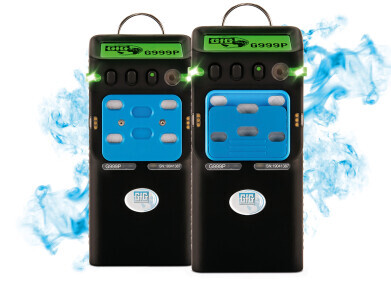Safety
How Do Gas Detectors Work
Jul 04 2014
Gas detectors measure the level of different gases within the air, and are used to prevent anyone from being exposed to toxic gases that could poison or kill. You may recognise them as fire alarms or carbon monoxide detectors in your home.
As you may be aware, these kinds of detectors can be portable or stationary. Portable gas detectors are used by firefighters and industrial workers while stationary devices are fixed to the walls or ceilings of homes, offices and shops. Both types of alarm work in the same way. When a harmful gas is detected, the alarm will trigger noises and/or lights that can be heard and seen by everyone in the building or close vicinity. Some detectors are even capable of picking up multiple gases or toxins at once.
How do they Work?
Gas detectors work by using a scaling system. When a harmful gas is detected and the amount exceeds the scale’s maximum level, this will trigger the alarm. For larger buildings, such as apartment blocks or factories, gas detectors can be linked together to create a safety system that is activated when one alarm goes off. You may like to find out more about how this works by reading the article Infrared vs. Catalytic Bead Technology: Pros and Cons.
The Technology Behind it All
There are two types of gas that detectors pick up: combustible and toxic. In order to detect these gases, two unique technologies were developed:
Catalytic and infrared sensors are able to detect combustible gases, and are more commonly used in everyday life. Catalytic sensors are triggered when a combustible gas touches a catalytic surface. A resistance change occurs due to heat and an alarm is set off. Similarly, an infrared sensor is a light detector, so if a combustible gas flows into the path of light between the transmitter and receiver it can determine what type of gas it is.
Electrochemical sensors are used in the detection of toxic gases and work by producing electrode signals. These are used for detecting gases like carbon-monoxide and are extremely sensitive. The majority of these will have digital displays.
Metal Oxide Semiconductors are another way of detecting toxic gases. This method uses sensitive film that reacts when toxic gases reach their peak. They work well in low humidity ranges and in addition, can detect combustible gases as well. This is one example of a gas detector that can be used to detect a range of different gases.
For more information on gas detection and the benefits, read the article Universal Truths: Evaluating Next Generation Gas Detection; Designing, Implementing and Maintaining a Truly Universal Approach to Gas Detection.
Digital Edition
PIN 25.2 Apr/May
April 2024
In this Edition Safety - Carbon monoxide toxic and flammable gas detection Analytical Instrumentation - Density: A fundamental parameter at critical stages within the petroleum sector...
View all digital editions
Events
Canada Gas & LNG Exhibition & Conference
May 07 2024 Vancouver, BC, Canada
May 08 2024 Lahore, Pakistan
May 13 2024 New Orleans, LA, USA
May 14 2024 Tashkent, Uzbekistan
May 14 2024 Oklahoma City, OK, USA



.jpg)














